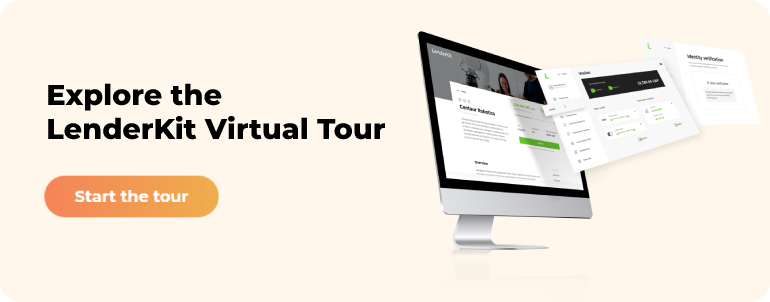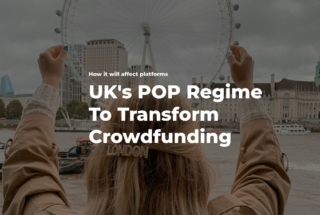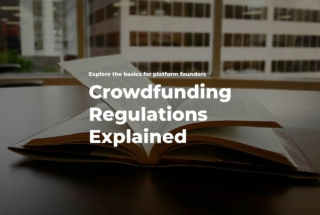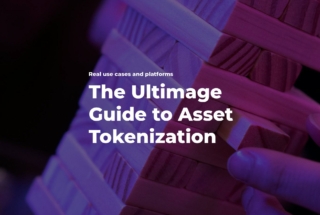Crowdfunding Mentality or Where to Find People Who Invest
No time to read? Let AI give you a quick summary of this article.
Crowdfunding platforms face a two-sided marketing challenge. They need to attract both – fundraisers and investors in order to have the mechanism going. Otherwise, the match-funding on the platform isn’t happening.
The more investors participate, the higher is the crowdfunding platform’s attractiveness for fundraisers. A large pool of investors increases any fundraiser’s chances to get financing for their project. And vice versa, a platform with a wide choice of fundraisers increases the chances for investors to find projects that comply with their requirements and fit their interests.
While fundraisers are more likely to find your platform on their own, an investor acquisition might not be easy. That’s why crowdfunding platform owners need to understand where to look for the right investors, what specifics to consider to attract them, and how to retain them.
What you will learn in this post:
Types of investors, or who are you addressing your requests?
To build your crowdfunding platform marketing strategy, you need to understand clearly what investors you work with. Based on the investors’ professionalism level, sums they invest, limitations imposed on them by regulators, and income level, investors are divided into two main categories.
Accredited investors
Accredited investors are high-net-worth individuals, banks, insurance companies, trusts, and companies. They are permitted to invest in securities not registered with the Securities and Exchange Commission because they have enough funds and a reduced need for protection from regulators. In other words, they can bear higher investment risks.
To be considered a crowdfunding accredited investor, a person shall meet with one of the following requirements:
- Either the person’s income for the last two years shall exceed $200,000, or joint income with a spouse exceeds $300,000 for those years. There shall be reasonable expectations for the income to grow.
- The individual net worth of a person or a joint net worth with a spouse exceeds $1,000,000 excluding the value of the primary residence.
- To be a general partner, a director, or an executive officer of the company – the issuer of unregistered securities.
- To be able to demonstrate sufficient education or experience that shows professional knowledge of unregistered securities.
A private business development company with assets worth more than $5,000,000 can also be considered an accredited investor.
Also read: Crowdfunding for Retail vs Accredited InvestorsRetail investors
A retail crowdfunding investor is an individual, a non-professional investor. Retail investors are permitted to invest not more than 10% of their annual income1 if their yearly income is above $107,000, and 5% of their annual income if it is equal to or less than %107,000.
You might think that retail investors do not pose a significant interest to your crowdfunding platform, however, it is not correct.
Retail investor crowdfunding share in the market was high even before the COVID pandemic hit the world. So, in 2020, American households held more than 59% of the U.S equity market, – SEC reports2. And with the pandemic, many people started looking for additional sources of income. Investment became one of them. So, in India, the retail investor share in the stock market grew from 33% in 2016 to 45% in 2021, The Economic Times3 informs.
How to attract investors to your crowdfunding platform
Now, when you know what types of investors you need to attract, it is time to check how to find investors in crowdfunding.
A carefully prepared marketing campaign is the first thing you have to take care of. You can use the following ways to promote your platform:
Referral and affiliate programs – a business offers a reward or cross-promotion for bringing new customers. This option is good for building brand awareness.
Personal networks – your clients, friends, relatives, contacts can help you to attract first leads.
Events and webinars – by organizing them, you let potential investors learn about your platform, your business value, and the unique opportunities you offer.
Organic search – the correct SEO strategy will help you to rank at the top of search results.
Social networks – social media content and how people interact with this content in social media is very important for Google. You do not need to create business accounts on all social networks. But having a LinkedIn account is important.
Content marketing and PR – launch a blog where you will share important information with users, run webinars, create white papers, conduct surveys, etc. It will help you to get more publicity and be noticed by solid media.
Influencer marketing – partner with seasoned retail investors sharing their knowledge in media, and launch an educational campaign for their audience.
Email marketing – it helps you to stay in touch with your current network and reach out to potential backers by creating incentives, sharing knowledge, sending offer updates, etc.
An alliance with a crowdfunding aggregator – ask to include your platform in the top list or to post a review about the platform to look credible in the eyes of both investors and fundraisers.
Partnership with the bank – it makes it simpler for businesses and startups to get financial aid.
What else can you do to attract investors for crowdfunding?
To understand how to onboard crowdfunding investors, you need to find out what are their reasons to use or not to use crowdfunding platforms for investment. We have identified the major risks investors are concerned about, and based on them, have provided some tips to mitigate them.
| Issue | Solution |
| Investors are concerned about possibly fraudulent fundraisers | Indicate that you conduct initial screening for fundraising application and inform about the screening criteria. Also, investors’ funds can be kept in an escrow account for additional security. |
| Uncertainty about the project’s future performance | Publish on the website past performance data and rates of return. If you are a new company, you can rely on marketing. |
| Investors are lacking information about the risks and the expected returns on investment | Provide clear information about the risks involved in each crowdfunding type as well as clarifications on the expected returns. |
| Difficulty investors face when trying to exit investment prior to its maturity. | Provide information on liquidity risks. Investors shall understand that they most likely will have to wait until a specific event occurs, such as the sale of the company, a management buy-out, etc., before they get their funds returned. |
How much can investors make off crowdfunding?
Judging from requirements and limitations, investors shall be highly motivated to invest in crowdfunding. And this crowdfunding motivation is in the potential of high income.
So, in P2P crowdfunding, investors earn less than in equity crowdfunding but they also face fewer risks. On average, investors can expect from 5% to 9% per annum, depending on the project. A fixed rate is repaid to investors even if the project outperforms.
In equity crowdfunding, investors get a share, equity in the company they are investing in. Repayments are made based on the share: the higher the share is, the more the repayment is. If a project outperforms, investors can earn a lot, indeed. On average, it is possible to get 15% up to 15% of annual return from an equity investment. But if a project fails, investors can also lose their funds.
How do institutional investors see crowdfunding?
A company can invest from 10% up to 80% of its assets. In some cases, this percentage might increase to 100%. Considering that under institutional investors we usually mean banks, foundations, investment companies, they can invest significant sums. Therefore, attracting institutional investors is beneficial to crowdfunding platforms.
What crowdfunding offers institutional investors
We have already mentioned an opportunity to get a very high return on investment if a project is successful. However, along with a potential of a high ROI, institutional investors get one more opportunity: investing with impact. Investing in sustainable crowdfunding platforms helps institutional investors to get high exposure to the general public and create a positive image.
Along with sustainable projects, institutional investors are interested in investing funds in varied projects to diversify their portfolios. So, the usual allocation of invested funds is around 40% in equity projects and around 40% goes to projects that offer a fixed income. Therefore, crowdfunding platforms are interested in providing a diversified portfolio instead of focusing on a specific type of project.
Crowdfunding software for building an investment platform
At LenderKit, we provide white-label crowdfunding software to help you solve the marketing challenge, attract more customers and close more online investment deals. You can use out-of-box features if they fit your business needs or we can customize a solution based on your requirements. Schedule a free demo or get in touch with us to find out details and discuss your business needs.




